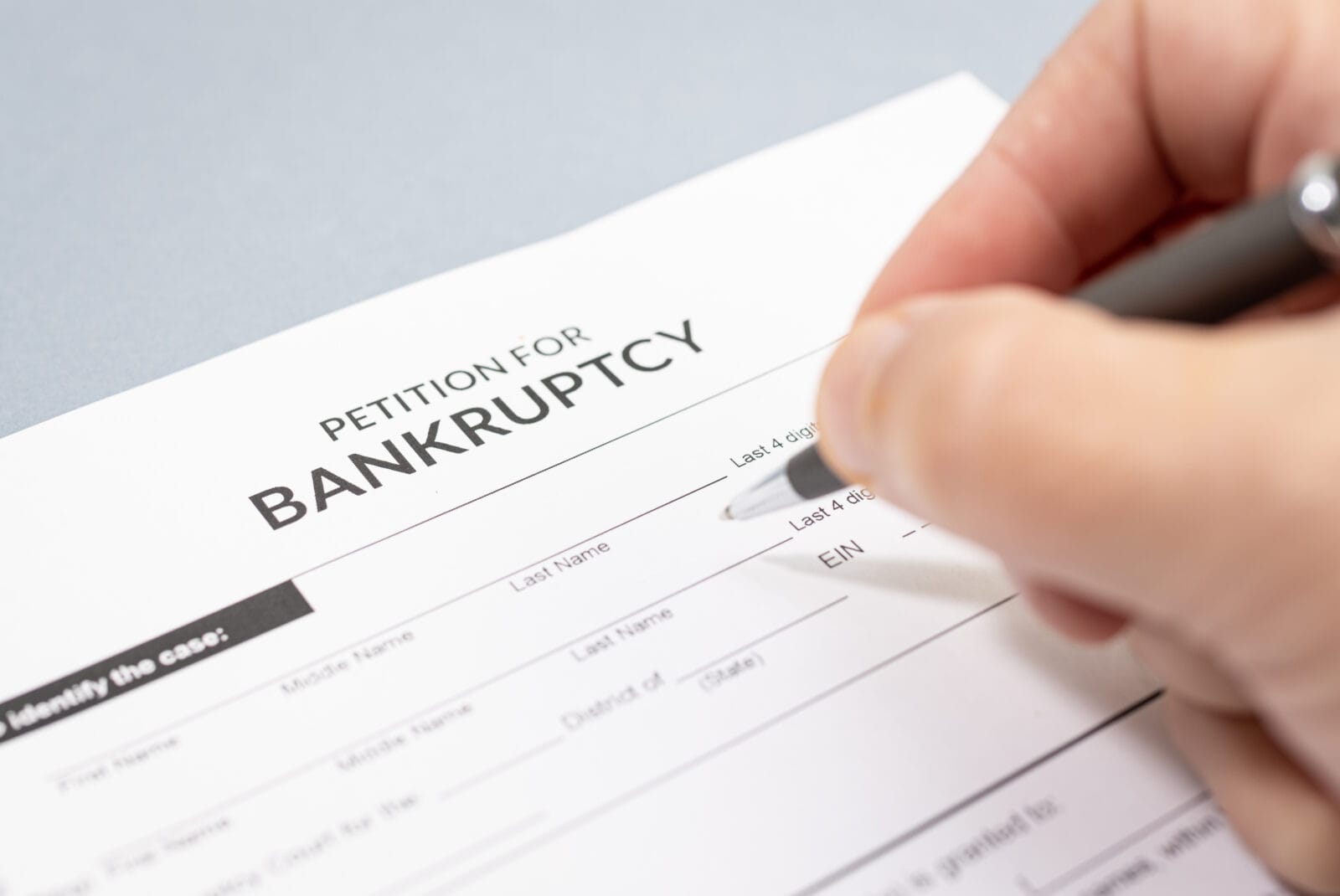
The Short Answer…
Filing bankruptcy is a legal process that can help you eliminate or restructure overwhelming debt. To file for bankruptcy, consult an attorney, complete credit counseling, gather financial documents, and file your petition with the federal bankruptcy court. While bankruptcy can feel overwhelming, the process is manageable and more effective when you have experienced legal support on your side.
At Stewart Bell, PLLC, we guide our fellow West Virginians through each step of the bankruptcy process. Here’s what you need to know about how to file bankruptcy, what to expect, and why having a bankruptcy lawyer on your side matters.
Key Takeaways
- Start by speaking with an attorney. A lawyer helps you understand eligibility, choose the right chapter, and protect your assets.
- Know your options. Most individuals file either Chapter 7 (debt discharge) or Chapter 13 (repayment plan).
- Complete mandatory counseling. A credit counseling course must be finished within 180 days before filing.
- Gather financial documents. You’ll need to provide income records, debts, assets, expenses, and proof of identification.
- File your petition with the court. Filing begins your case, triggers the automatic stay, and sets your path toward debt relief.
- Fulfill post-filing obligations. This includes the meeting of creditors (341 meeting) and debtor education before discharge.
Table of Contents
- Step 1: Contact an Attorney
- Step 2: Understand Your Bankruptcy Options
- Step 3: Complete Mandatory Credit Counseling
- Step 4: Gather Required Documents
- Step 5: Complete the Required Bankruptcy Forms
- Step 6: File Your Bankruptcy Petition
- Step 7: Attend the Meeting of Creditors (341 Meeting)
- Step 8: Complete the Debtor Education Course & Follow Trustee Instructions
- Frequently Asked Questions About Filing for Bankruptcy
- How Stewart Bell Can Help You File Bankruptcy With Confidence
- Ready to File? We Can Help.
Step 1: Contact an Attorney
The very first step in filing for bankruptcy is speaking with a qualified bankruptcy lawyer. Bankruptcy law is federal, but exemptions and procedures can vary by state. An attorney can explain your eligibility, help you choose the right chapter, and make sure your paperwork is accurate. Mistakes in filing can lead to delays, dismissal, or loss of property you could have kept.
Step 2: Understand Your Bankruptcy Options
Not all bankruptcies are the same. The 2 most common options for individuals are Chapter 7 and Chapter 13, and which one makes the most sense for your situation depends on your income, assets, and long-term financial goals. Here’s how each works:
Chapter 7 Bankruptcy (Liquidation)
- Purpose: Eliminates most unsecured debts such as credit cards and medical bills.
- Assets: A trustee may sell non-exempt assets to repay creditors, though many essentials like a home, retirement and education savings accounts, vehicle, or household goods can often be protected by exemptions, and most people who own property that would otherwise be sold by the Trustee instead opt to file Chapter 13, or not file at all.
- Eligibility: Requires passing a means test to show you don’t have enough disposable income to repay debts.
- Timeline: Typically completed within 4–6 months.
Chapter 13 Bankruptcy (Repayment Plan)
- Purpose: Creates a structured repayment plan lasting 3 to 5 years, allowing you to catch up on overdue bills like mortgages or car loans.
- Assets: You keep your property while making payments under the court-approved plan.
- Eligibility: You must have a steady income and your debts must fall within federal debt limits.
- Timeline: The repayment plan usually lasts 3–5 years.
An attorney can review your financial situation and help you decide which chapter offers the strongest path toward relief.
Step 3: Complete Mandatory Credit Counseling
Before filing, you must complete a credit counseling course from a government-approved agency within 180 days. This session reviews your finances and explores alternatives to bankruptcy. Upon completion, you’ll receive a certificate, which must be included in your petition.
Step 4: Gather Required Documents
One of the most important steps in filing bankruptcy is collecting the paperwork you’ll need to support your petition. The bankruptcy court requires a full picture of your finances before approving your filing. Below are the documents you need to file bankruptcy:
- Identification and personal information: Driver’s license or state-issued ID, and Social Security card.
- Income: Pay stubs, W-2s, tax returns from the past 2 years, and recent bank statements.
- Expenses: A detailed budget of your monthly household costs such as rent or mortgage, food, insurance, transportation, childcare, and utilities.
- Debts: A complete list of creditors, account numbers, amounts owed, and billing addresses.
- Assets: Documentation for property, vehicles, retirement accounts, investments, and other valuables.
- Financial history: Records of any lawsuits, foreclosures, repossessions, or large financial transactions made within the last few years.
Staying organized during this step is important. Forgetting or omitting information can cause major setbacks, including dismissal of your case. A bankruptcy attorney can help you prepare and review all necessary documents, helping ensure that nothing is overlooked and that your petition meets court requirements.
Step 5: Complete the Required Bankruptcy Forms
Before your petition can be filed with the court, you must complete a series of official bankruptcy forms that detail your entire financial situation. These forms can be lengthy and confusing, but they are the foundation of your case. They typically include:
- Voluntary Petition: The official request to begin your bankruptcy case.
- Schedules of Assets and Liabilities: A complete breakdown of what you own and what you owe.
- Schedule of Current Income and Expenses: Documentation of how much money comes in each month and where it goes.
- Statement of Financial Affairs: A record of your recent financial history, including lawsuits, transfers of property, or payments to creditors.
- Creditor Matrix: A list of all creditors with contact information so they can be notified of your filing.
Step 6: File Your Bankruptcy Petition
Once you and your attorney have gathered and completed all the necessary paperwork, the next step is to officially file your bankruptcy petition with the federal bankruptcy court in your district. This filing formally starts your case and signals to the court and creditors that you are seeking bankruptcy protection.
When your petition is submitted, it will include your completed bankruptcy forms, credit counseling certificate, and supporting documents that outline your income, expenses, debts, and assets.
- Filing fees: Both Chapter 7 and Chapter 13 require a filing fee, though the exact amount can vary depending on the chapter and court.
- Automatic stay: As soon as your petition is filed, the court issues an automatic stay, a powerful protection that immediately stops most collection activities. This means creditors must halt wage garnishments, repossessions, foreclosure proceedings, and harassing phone calls.
After filing, the court assigns a bankruptcy trustee to oversee your case. The trustee’s role is to review your documents, ensure honesty in your disclosures, and in some cases, liquidate non-exempt property (in Chapter 7) or manage your repayment plan (in Chapter 13).
Step 7: Attend the Meeting of Creditors (341 Meeting)
After your bankruptcy petition is filed, the court will schedule a meeting of creditors, often called the 341 meeting. This is a mandatory part of the process where you’ll meet with the bankruptcy trustee assigned to your case. Creditors may also attend, though in most cases they do not.
At the meeting, you’ll be placed under oath and asked questions about the information in your petition, including your assets, debts, income, and recent financial history. The goal is to confirm that everything you submitted is accurate and complete.
Your attorney will attend with you, making sure you understand the process and helping you respond confidently. Failing to attend or provide requested documents could lead to delays or dismissal of your case.
Step 8: Complete the Debtor Education Course & Follow Trustee Instructions
The final step before receiving your discharge is completing a debtor education course, also known as a financial management course. This is different from the pre-filing credit counseling and is required in both Chapter 7 and Chapter 13 cases. The course provides practical tools for budgeting, managing credit, and avoiding future financial trouble. Once completed, you’ll receive a certificate that must be filed with the court.
In addition, you must follow any instructions from your trustee:
- Chapter 7: The trustee may oversee the sale of non-exempt property and distribute proceeds to creditors.
- Chapter 13: You’ll be required to begin making plan payments right away and continue throughout the repayment period.
Only after completing these requirements will the court issue a discharge order, officially wiping out eligible debts and giving you the financial fresh start bankruptcy is designed to provide.
Frequently Asked Questions About Filing for Bankruptcy
You can file for bankruptcy at any time if you meet the eligibility requirements for the chapter you want to pursue. However, the law sets waiting periods if you have previously filed:
- Chapter 7 after Chapter 7: 8 years from the date of the first filing.
- Chapter 13 after Chapter 13: 2 years from the first filing.
- Chapter 13 after Chapter 7: 4 years from the first filing.
- Chapter 7 after Chapter 13: 6 years from the first filing (with some exceptions).
Filing bankruptcy immediately triggers an automatic stay, which stops most creditor actions. Longer-term effects include:
- Possible discharge of unsecured debts (Chapter 7).
- Creation of a structured repayment plan (Chapter 13).
- Effects on your credit report (7–10 years depending on chapter).
- Relief from overwhelming financial stress and creditor harassment.
- Chapter 7: If your equity is covered by exemptions, you may keep your home as long as you stay current on the mortgage. If your equity is too large, then you can still file Chapter 13 to avoid having the property sold by the Trustee.
- Chapter 13: You generally keep your home and can catch up on overdue payments through your repayment plan.
- Chapter 7: If your car loan balance and equity fall within exemptions, you can usually keep it. If not, the lender may repossess it unless you reaffirm the loan or redeem the car.
- Chapter 13: You can usually keep your vehicle and may be able to restructure your loan through your repayment plan.
Bankruptcy can eliminate many unsecured debts, including:
- Credit card balances
- Medical bills
- Personal loans
- Utility bills
Some debts typically cannot be discharged, such as:
- Student loans (except in rare hardship cases)
- Child support and alimony
- Certain tax debts
- Court fines and restitution
Bankruptcy cases are filed in federal bankruptcy courts, not state courts. Your case must be filed in the district where you live or where your business is located.
You can prepare forms and documents electronically, and attorneys often file cases online through the court’s electronic system. However, individuals who file without an attorney may need to submit paperwork in person or by mail, depending on the court’s rules.
- Chapter 7: Usually 4–6 months from filing to discharge.
- Chapter 13: 3–5 years, since you must complete the repayment plan before discharge.
You generally won’t appear before a judge unless there are disputes. However, you must attend the meeting of creditors (341 meeting), where the trustee and creditors can ask questions about your case.
There is no lifetime limit, but waiting periods apply between cases. Courts also discourage abusive or repetitive filings, and filing too often could result in dismissal.
Bankruptcy requires paying a filing fee, which varies by chapter, and attorney’s fees if you hire a lawyer. If you cannot afford the fee upfront, you may be eligible for a waiver or an installment plan approved by the court.
You are not legally required to have a lawyer, but bankruptcy law is complex. A bankruptcy lawyer can:
- Help you decide whether Chapter 7 or Chapter 13 is right for you.
- Ensure all forms and documents are completed correctly.
- Protect your property through exemptions.
- Represent you at the meeting of creditors and throughout the process.
How Stewart Bell Can Help You File Bankruptcy With Confidence
At Stewart Bell, PLLC, we’ve built our reputation on helping West Virginians navigate the bankruptcy process with confidence and dignity. With decades of experience, we understand the unique financial challenges families in our communities face, and we know how to tailor solutions that provide practical, lasting relief.
When you choose us, you get:
- Local knowledge, proven results. As a West Virginia law firm, we know the regional courts, trustees, and procedures. That local insight helps us anticipate challenges and find the best strategy for your case.
- Decades of experience. Bankruptcy law is complex, but we’ve guided our clients through Chapter 7 and Chapter 13 filings successfully, protecting assets and eliminating debt along the way.
- Customized financial solutions. Your situation is unique, and we don’t believe in one-size-fits-all answers. We carefully evaluate your income, assets, and debts to recommend the best path forward.
- Compassionate support at every step. We know filing for bankruptcy can feel overwhelming. Our team treats you with respect and keeps you informed so you never feel alone in the process.
- Free, no-obligation consultations. We believe everyone deserves to understand their options before making big decisions. That’s why we offer free consultations to explain the process and answer your questions.
Our mission is simple: to help hardworking West Virginians get a fresh start, protect what matters most, and move forward with confidence.
Ready to File? We Can Help.
If you’re overwhelmed by debt and unsure how to file bankruptcy, you don’t have to face it alone. At Stewart Bell, PLLC, we offer free consultations to help you understand your options. Reach out today to speak with an experienced West Virginia bankruptcy lawyer and take the first step toward financial relief.




